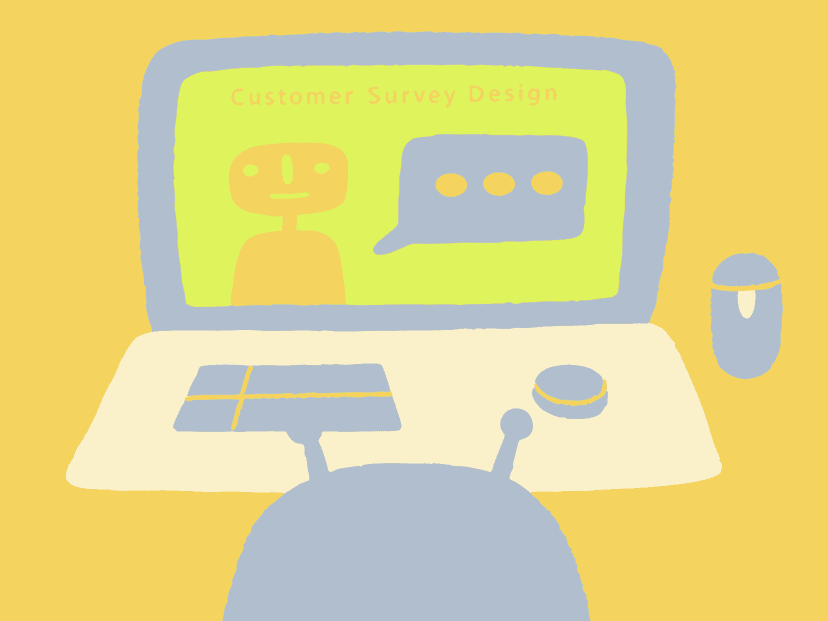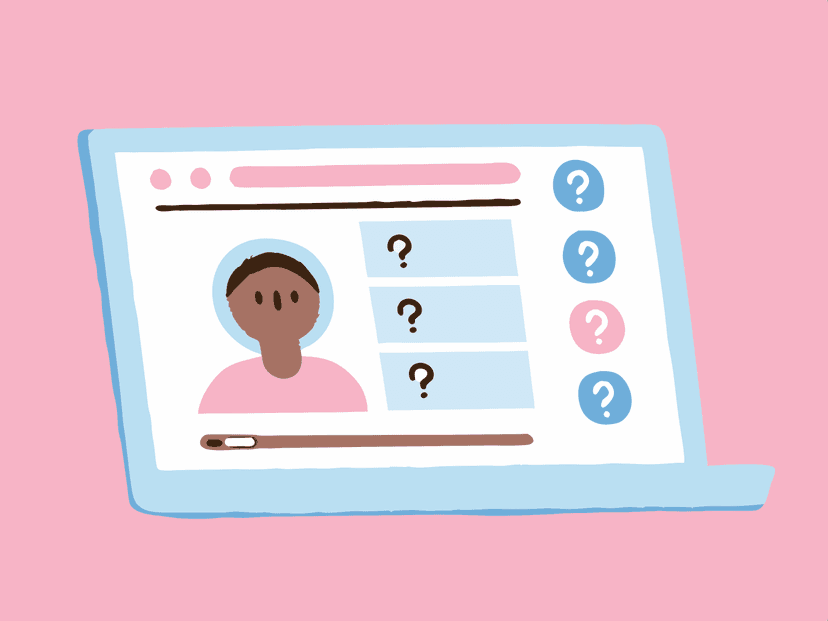Tuesday, October 15, 2024
Vol.003 7 Ways to Use AI to Enhance User Interviews in 2025

Want to make your user interviews even more effective? Smartly integrate AI! It not only smooths out the process but also makes your conversations more substantial, considerate, and insightful. It's like achieving a 1+1>2 effect! AI is not just a capable assistant; it can also help you uncover fantastic insights that can take your product development and user experience to new heights!
However, in this era dominated by data and machine learning, we face a challenge: how to fully leverage the power of AI without losing the human touch in interviews?
Today, we have prepared 7 super cool methods to make AI a capable assistant in your user interviews while maintaining that human touch. Let's see how AI can help you:
- Understand your users' thoughts better and have even better interactions with them
- Enable every user to participate effortlessly, regardless of their special needs
- Take care of those annoying trivialities, allowing you to focus on the truly important conversations
Let's take a look at these seven AI helpers that make your interviews easy and fun:
- AI helps you think of questions that hit the nail on the head of what users are thinking
- Enables every user to chat freely, no matter what special needs they have
- Instantly understands user emotions, not even missing a blink
- Uses big data to paint a vivid picture of the user
- AI becomes the super recorder, capturing all the great moments
- Kicks bias out of the game, making the results more authentic and reliable
- Follows up warmly after the interview, making users feel your sincerity
1. Formulate targeted interview questions
Asking captivating interview questions not only demonstrates your genuine interest in understanding user needs and challenges but also helps you create a trusting environment that encourages them to reveal more information. However, determining which questions are most relevant to users often feels like groping in the dark, which may lead to neglecting pain points or interviews lacking focus.
Integrating AI into the interview preparation process changes this dynamic, as it can generate targeted questions that best fit individual experiences and backgrounds. These questions are rooted in detailed historical user insights, known user personas, and behavioral patterns.
Tools and strategies to use AI for developing interview questions:
- Use predictive analytics software: Platforms like DataRobot or Alteryx AI can predict future user behavior based on historical data, forming forward-looking interview questions.
- Use Natural Language Processing (NLP): Analyze previous interview records with IBM Watson or Strong to identify keywords or themes and formulate questions for subsequent conversations.
- Personalize questions: Tools like Hotjar AI (which will be详细介绍d below) can build insightful targeted questions based on your scope, audience, and objectives.
2. Improve the accessibility of interviews
The accessibility of interviews is not just about ensuring that participants can access and participate in the process - it's about making customers feel valued and understood. A truly accessible interview recognizes and adapts to the unique needs of each participant, whether it's language barriers, visual impairments, or other special requirements.
AI enhances the accessibility of interviews by providing real-time adjustments and solutions to meet individual needs, creating a more inclusive environment.
Tools and strategies to use AI for improving interview accessibility:
- Translate meetings: Introduce tools like Worldly to translate video calls in real-time (audio, text, and subtitles), supporting over 30 languages, ensuring customers can express themselves comfortably in their native language.
- Check digital compatibility: Ensure your interview digital platform is compatible with enhanced screen readers (like JAWS or NVDA) for visually impaired individuals.
- Adopt AI-driven sign language tools: Collaborate with companies like Signapse AI, which has developed real-time synthetic sign language translators for websites and videos.
3.Understand customer emotions
Assessing and analyzing user emotions - the thoughts and feelings customers have in relation to your product or brand - is crucial for continuously delighting existing customers and attracting new ones. Tools like Net Promoter Score (NPS®), Customer Satisfaction (CSAT), and exit intent surveys provide a solid foundation for understanding users' basic opinions, but they miss the nuances behind contextual reasoning, such as sarcasm or inconsistent responses.
Implementing AI tools with advanced emotional capabilities - such as analyzing language patterns or emotional tones - helps bridge this gap, allowing you to not only discern what users are saying but also how they are saying it.
Tools and strategies to use AI for understanding user emotions:
- Use sentiment analysis software: Integrate sentiment analysis tools like MonkeyLearn or Lexalytics to measure the emotional implications behind users' verbal or written language.
- Implement emotion recognition technology: Use tools like Smart Eye or CallMiner during interviews to interpret the context behind facial expressions and vocal tones.
- Survey large-scale focus groups: Use platforms like Remesh to quickly analyze the overall emotions of up to 1,000 participants within minutes.
4. Refine user personas
User personas are virtual characters created based on your current (or ideal) customers, helping to reveal the different ways real users search for, purchase, and use your products or services. However, as customer preferences, behaviors, and pain points change, these personas can become outdated, leading to misleading interview strategies and missed business opportunities.
AI helps shape and refine the development of user personas by quickly processing large amounts of up-to-date user data, allowing you to capture more timely customer portraits and ensuring your products reflect the current user environment.
Tools and strategies to use AI for improving user personas:
- Utilize data aggregation: Use tools like Databox or Salesforce to integrate and process data from multiple sources of user behavior - CRM, web, social media analytics - to ensure personas are continuously driven by the latest insights.
- Expand behavioral segmentation: Deploy machine learning algorithms like k-means or hierarchical clustering to identify new audience segments based on online behavior, purchase history, or content preferences.
- Enhance persona imagery: Automatically generate customer avatars and mood boards using AI persona tools like UXPressia or Personify, enhancing your team's emotional understanding and identification of each persona.
5. Optimize interview transcription
Transcribing user interviews is crucial for transforming lengthy conversations into shareable, actionable insights. However, taking notes in real-time can affect your ability to fully engage in the conversation, and manually reviewing recordings after the interview can be time-consuming and prone to errors.
AI improves the interview transcription process by managing tedious administrative tasks - such as transcribing, adding timestamps, taking notes, and highlighting key points - allowing you to focus on the most important task: building connections with customers.
Tools and strategies to use AI for improving interview transcription:
- Real-time transcription: Use tools like Hotjar Engage or Otter.ai to automatically transcribe conversations, ensuring no details are missed.
- Enhance audio quality: Use platforms like Krisp to filter out background noise, ensuring clearer recordings and more accurate transcriptions.
- Summarize key points: Use AI-based summarization tools like AssemblyAI to distill lengthy transcriptions into key learning points.
6. Reduce bias
Bias in user research, whether conscious or unconscious, can distort results and limit the inclusivity of diverse user groups. For example, the personal beliefs of the interviewer may influence the selection of respondents, leading to confirmation bias, where the data reflects the interviewer's views more than the true opinions of the respondents.
AI helps counter these tendencies by identifying bias patterns in data collection, paving the way for a fairer representation of user feedback.
Tools and strategies to use AI for reducing interview bias:
- Detect and monitor implicit bias: Integrate bias detection algorithms like Fairness Indicators or IBM's AI Fairness 360 to continuously assess potential bias or skewed feedback in machine learning data.
- Utilize conversational AI: Use AI-driven chatbots like Xenioo or Tars for initial interview screening to ensure consistency in experience, tone, and questions for every participant.
- Optimize respondent sampling: Use AI tools like Qualtrics' Research or Hotjar Engage, which leverage machine learning to sample from a large pool of users, ensuring participants are representative.
7. Improve the follow-up process after interviews
Following up after interviews can strengthen your relationship with users, making them feel recognized for their contributions and time. However, crafting timely and thoughtful follow-up responses can be challenging, especially when managing large groups of interviews.
AI tools simplify this process by enabling you to personalize communication after interviews with precision and appropriateness, ensuring users feel valued and understood - not just another data point.
Tools and strategies to use AI for improving post-interview communication:
- Customize your messages: Use AI writing tools like Phrasee or Jasper to craft personalized emails that highlight key points from the interview and demonstrate a genuine understanding of customer feedback.
- Automate follow-up scheduling: Implement AI-driven scheduling tools like Motion or Clara to seamlessly coordinate future interviews based on users' available times, ensuring a continuous and smooth customer journey.
- Track user engagement: Use machine learning from Mixpanel or Pendo to monitor user engagement after interviews, further refining your follow-up communication strategies.
Hey, friends, remember that AI is just our helpful assistant, not the protagonist! Let it guide us, but let's maintain that warm human touch. In this way, not only can we make users happy, but we can also uncover golden ideas that can take our business to new heights. Isn't that fantastic? Come on, let's use AI + human touch to create amazing user interviews!
Related articles



